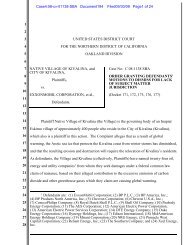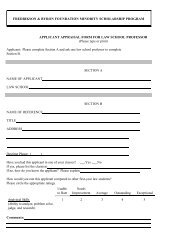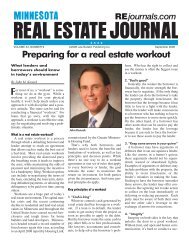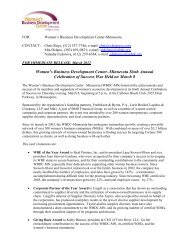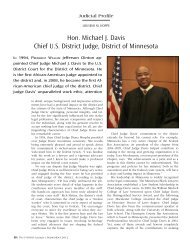Fin 48 - Fredrikson & Byron PA
Fin 48 - Fredrikson & Byron PA
Fin 48 - Fredrikson & Byron PA
You also want an ePaper? Increase the reach of your titles
YUMPU automatically turns print PDFs into web optimized ePapers that Google loves.
overall financial condition, has run well into the six (or seven) figures in out-of-pocket<br />
legal and accounting costs alone. The FASB itself recognized that FIN <strong>48</strong> would impose<br />
greater administrative costs on companies than FAS 109 had previously required. The<br />
question is whether FIN <strong>48</strong> provides the investing public, creditors, and regulators with<br />
informational benefits greater than these added compliance costs.<br />
The basis for the FASB’s conclusion that FIN <strong>48</strong>’s benefits would outweigh its<br />
costs was neither scientific nor compelling. The sum and substance of the FASB’s cost-<br />
benefit analysis is stated as follows in Appendix B to FIN <strong>48</strong>:<br />
The Board acknowledges that this Interpretation may increase<br />
the costs of applying Statement 109. The expected benefit of<br />
this Interpretation is improved financial reporting resulting<br />
from a more consistent application of Statement 109 in the<br />
recognition of tax benefits. <strong>Fin</strong>ancial statements of different<br />
enterprises will be more comparable because the uncertain tax<br />
positions that are within the scope of this Interpretation and<br />
their related income tax effects will be accounted for more<br />
consistently.<br />
Why, however, should anyone assume that different companies would apply a MLTN<br />
standard with any more consistency than they had a probable standard? Why would two<br />
companies with the same issue reach the same reserve analysis result? The evidence<br />
supporting the FASB’s asserted grounds for FIN <strong>48</strong>—greater consistency and accuracy—<br />
was never apparent from its published materials.<br />
D. Compliance With FIN <strong>48</strong> May Itself Impose Greater Tax<br />
Liabilities on Enterprises.<br />
The costs implicit in FIN <strong>48</strong> include the effect upon the enterprise’s position in<br />
actual or potential tax controversies with the government. As discussed below, FIN <strong>48</strong><br />
compliance generates information that the IRS and other tax collection agencies may<br />
4



